
Music is all about moments. Put on a favorite track and you’re swept along on a wave of pulsing, cresting energy. One minute the beat is simmering down to give you a breather (literally, if you’re on the dancefloor), and the next it’s winding back up, tightening like a coil spring. As it gradually swells in size and power, all that tension has to be released somehow, and you can just tell that something big is on the way – yep, it’s the ultimate moment in any track! Are you ready for it?
You know it’s coming, right? Nearly there… Building up to it… Just a little more… And… Here goes DA BOOM!
Yep, I’m talking about the drop, the modern track’s equivalent to the chorus. The bass finally hits like a ton of bricks, the beat pulls no punches, and the main riffs and lead elements are fully turned loose. A well crafted, hard-hitting drop gives the satisfying rush that music lovers crave, keeping them coming back for ‘just one more listen’. The drop doesn’t exist in a vacuum, of course, and the preceding breakdown/build-up section contributes greatly to its impact.
In fact, there’s a lot to get right – and a lot that can go wrong – when it comes to creating the perfect breakdown/build-up/drop combo. It’s as much about production technicalities as it is psychology, psychoacoustics and the kind of insight that from years of experience.
I kick it off with mine drop science study and a selection of instantly inspiring arrangement recipes. Next, take control of tension and drama through our breakdown and build-up formulas. Make your drop unforgettable with essential edits, fills and impact-maximising FX. Discover psychology and employ psychoacoustic tricks that’ll make your drop seem larger than life.
So, ready to drop it like it’s hot? OK, here it comes…
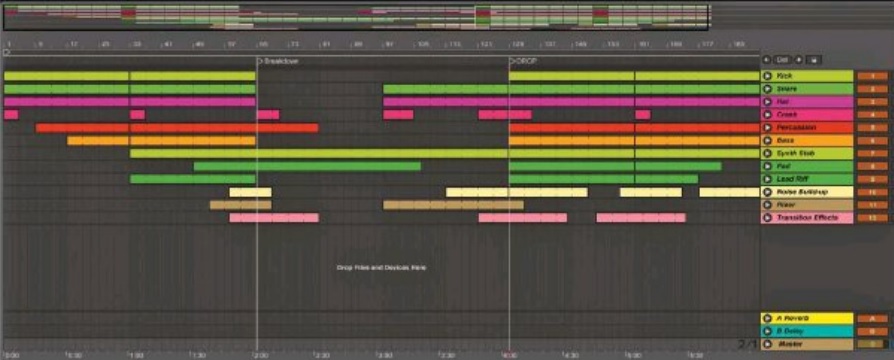
Gearing up to that moment
The drop is the climactic moment of the track. It’s when the strobes flash, the smoke machines blast and bass hits hard. The term comes from the idea of dropping things back into the track – with most music, this means the core rhythmic elements, and of course, the bass.
Over the years, the arrangement of music has become quite uniform. We’ve all heard so much of it now that we expect things to happen at certain times…
Arrangement 101
Typically, things start off with minimal elements to set the tone, then move forward in 16-bar sections, adding elements every 4- or 8-bars to ramp up the power. This building continues until the breakdown, which typically falls right in the middle of the track and can last from anything from 8 to 32 bars, or even more. The breakdown leads us into the drop, the ultimate high point of the track. After the drop, the intensity gradually declines until the track end. It’s a tried and tested structure that works well in most situations.
Powerful drops rely on subverting our expectations. For example, if you’ve heard a tune’s catchy chorus, you’ll be expecting it to come back later in the track. When it does return, it’s the same but typically in a stronger format than before, increasing the payoff. While a lot of music doesn’t typically employ the verse/chorus arrangement style, the principle of priming the audience then rewarding them with a payoff is exactly the same. Our goal is to establish a core idea, then take it away, then bring it back in again stronger than ever.
Turn up the contrast
A sense of contrast can help really maximise a drop’s impact. One section of a track will sound bigger when it’s placed next to a section that’s comparatively ‘small’ or low in power. We’ve all heard high-pass filter out the bass, only to throw it back in again. When the bass does comes back, the track suddenly comes alive again, thanks to this contrast. It’s this idea that makes the drop hit harder, after having the power pulled back in the breakdown for a triumphant reintroduction.
Combining contrast with tension and release is the route to truly epic drops. Our brains tend to favour orderly, repeating patterns to latch onto. In the final stages of a build-up section, everything becomes chaotic – rhythms start to speed up, and patterns starts to blur together. You might also start hearing rising synth tones. Any pitch that rises upwards will create the impression of building and a rise in intensity, but it also adds a feeling of chaos into the music.
Suddenly, we don’t have that stable pitch anymore – our tonal centre (ie, the music key of the track) has become lost and muddied, creating tension. When the drop hits, the chaos in reined back in, and the track seems to stabilise, providing welcome relief and restoring focus.
Perfect drop recipes
Need arrangement inspiration for your next track? Here are eight of the most useful build-and-drop recipes
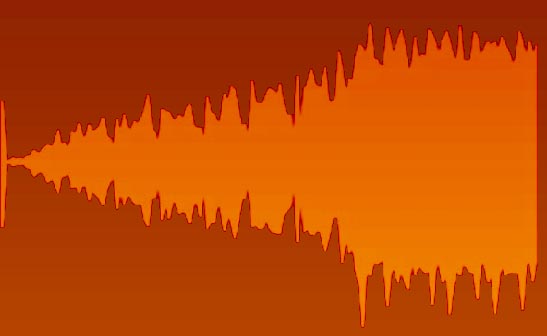
The head nodder
Breakdowns don’t always need a massive build-up to the drop. It’s important to give the listener a break, but it can be just as important to keep the momentum flowing throughout the entire track – Richie Hawtin uses this to great effect in his classic record Minus Orange. This type of build is the subtlest of them all, but can extremely effective when used correctly. Start by thinking about where the intensity in the track is coming from – what’s pushing it forward? Typically, the real driving forces are the kick, bass and hi-hats. If you want to indicate a change without disruption flow, process these with filters, keeping their rhythmic pulse but pulling back the power. Sometimes a very gradual roll-back from the percussion during a breakdown will make a drop spring to life in a subtle way.
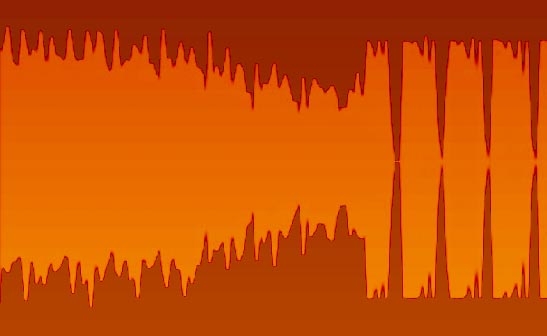
The roll-out
Build, then build, then build some more – a tried and tested method of creating tension ready to be released at the drop. This is typically put into action with snare builds which double in time every one or two bars, or with huge sweeps and noise builds that increase in pitch and power over the breakdown. The classic approach is to have a snare (typically a 909) which starts off playing on every beat for two bars, then eighth-notes for another two bars, then 16th-notes, before finally hitting 32nd-notes for a frenzied climax into the drop. Couple it with a synth and noise riser for extra effect. Check out Len Faki’s Death by House to hear some powerful synth rises leading into the drop. Keep building, and once your ramp-up is complete, hit the audience hard with a full-on dramatic entrance – no messing about!

The build’n’gap
You know those excruciatingly long pauses when a competition winner is announced on television or radio? We all know that something big is coming, but the pause increases the tension. Music is no different – if we increase the tension during the build-up, but then cut it all off a bar or two before the drop, you can be pretty sure that you have 100% audience attention for the duration of that gap. A typical build-up section removes the bass from the track so you feel the impact when it kicks back in. With this method, you’re free to have a bit of bass in your build up, as the gap is the ultimate removal. You don’t even have to use complete silence: long rever tails, trailing delays, or filtered sweeps are a great way of keeping things moving forward. Check out Psycatron’s She Is Music to hear it in action.
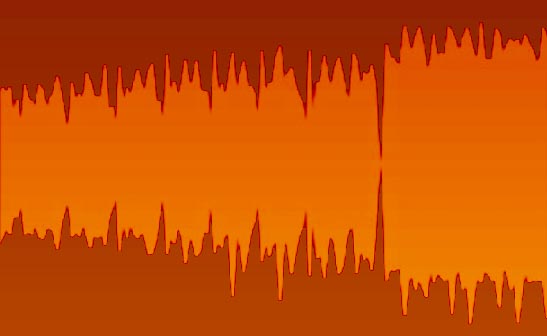
The overshooter
As we’re all used to formulaic build-ups and drops, we expect everything to kick in on the usual beat one of the bar. But what if the track kicks back in on beat two or three instead? A great example of this can be heard in Peter Horrevorts Bloody Hands – after the build-up in the middle of the track, it drops back in; but instead of placing the power on the first beat, it hits hard on the second beat. It’s extremely effective, and stands out as a key point of interest in the record. In its simplest form, leave a gap of absolute silence on beat one, which can leave listener wondering whether the record has been silenced. Alternatively, throw in a vocal or any other powerful sample, percussion sound, drum roll, bass squelch or reversed kick to help the unexpected edit flow more smoothly.
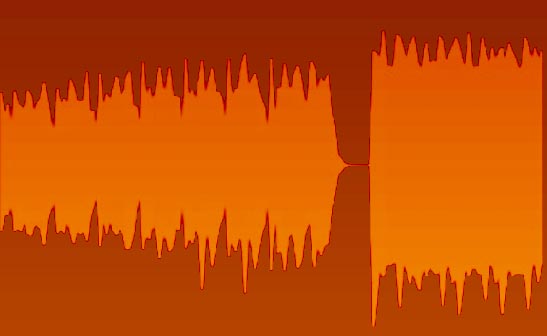
The time extender
As always, playing with people’s expectations is a great way of grabbing attention. So what if you go through a build-up but the drop never happens? A great way to squeeze out more tension and anticipation before bringing those beats back is to insert an extra one, two or even four bars after the build-up! This kind of pause can be found in genres such as trance, which have epic melodic breakdowns and powerful riffs that continuously intensify toward the drop. By bolting on an extra gap of silence, the intense melodies and build-up elements can fade away, giving the listener a little breathing room before your beats-and-bass barrage finally slams back in. Be careful, though – tack on too many additional sections throughout the track, and musicians may avoid mixing the record in with more predictably-arranged tracks.
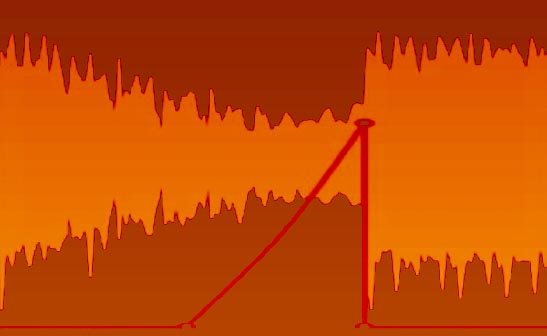
The alien swell
When building towards a drop, you’ll want to draw on various production tricks to ramp up the perceived intensity. One great way to build momentum is by automating trippy reverb or delay effects over certain breakdown elements (or even the master channel) to the point of chaos, to ‘wash out’ the build-up and signify that something huge is about to happen. Then, just before the imminent point of impact, you can completely switch of all the effects to starkly slam back into the contrastingly dry drop. As we’re not used to hearing huge ambience vanish in such an unrealistic way, this trick is particularly effective for generating an attention-grabbing sense of claustrophobia. Have a listen to Dubfire’s Roadkill and hear how the build-up ambience sucks in right at the drop… guaranteed listener’s damage!

The A-to-B
The build-up doesn’t necessarily have to be a reduction and restatement of the main groove. Instead, take a more ‘poppy’ approach and join two sections together, just like a typical verse/chorus arrangement. Kink’s remix of Marc Romboy & Blake Baxter’s Muzik essentially moves between an A and B section in this way. Other tracks feature a similar approach, where the drop section has a completely contrasting vibe to the build-up, which then slams into a muscular, monotonous beat-and-bass combo. Lead your audience into the different sections and tie things together by either revealing elements separately, or via bridging section to smooth the transitions – remember, contrast is great, but you don’t want things to feel disjointed.

The anti-drop recipe
Sometimes you might create a build-up which is simply massive, all guns blazing. If you’ve already turned everything up to 11, where do you go from there? Although it’s the climactic moment, a killer drop doesn’t have to be the fullest moment of the track – by starting smaller at the drop, you create some headroom and give yourself the remainder of the track to ramp things back up again towards a big ending. See which sounds are really keeping the beat pulsing, and let the drop kick in with only those parts at first. Drum ‘n’ bass records use this technique to pull things back after an intense frenzy during the build-up – listen to the reintroduction of the beats in Camo & Krooked’s Climax which make it feel like the track has dropped… but really, the good stuff is yet to come!








